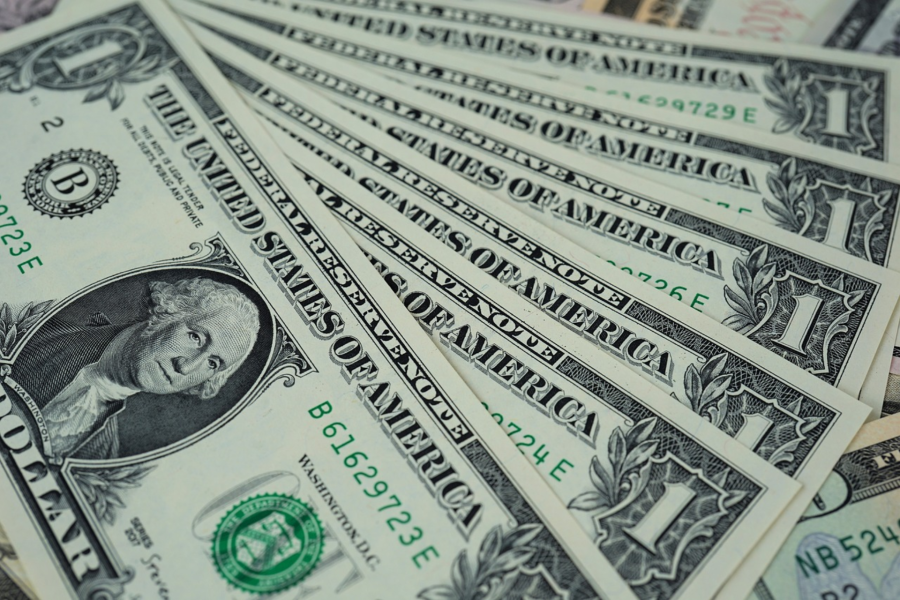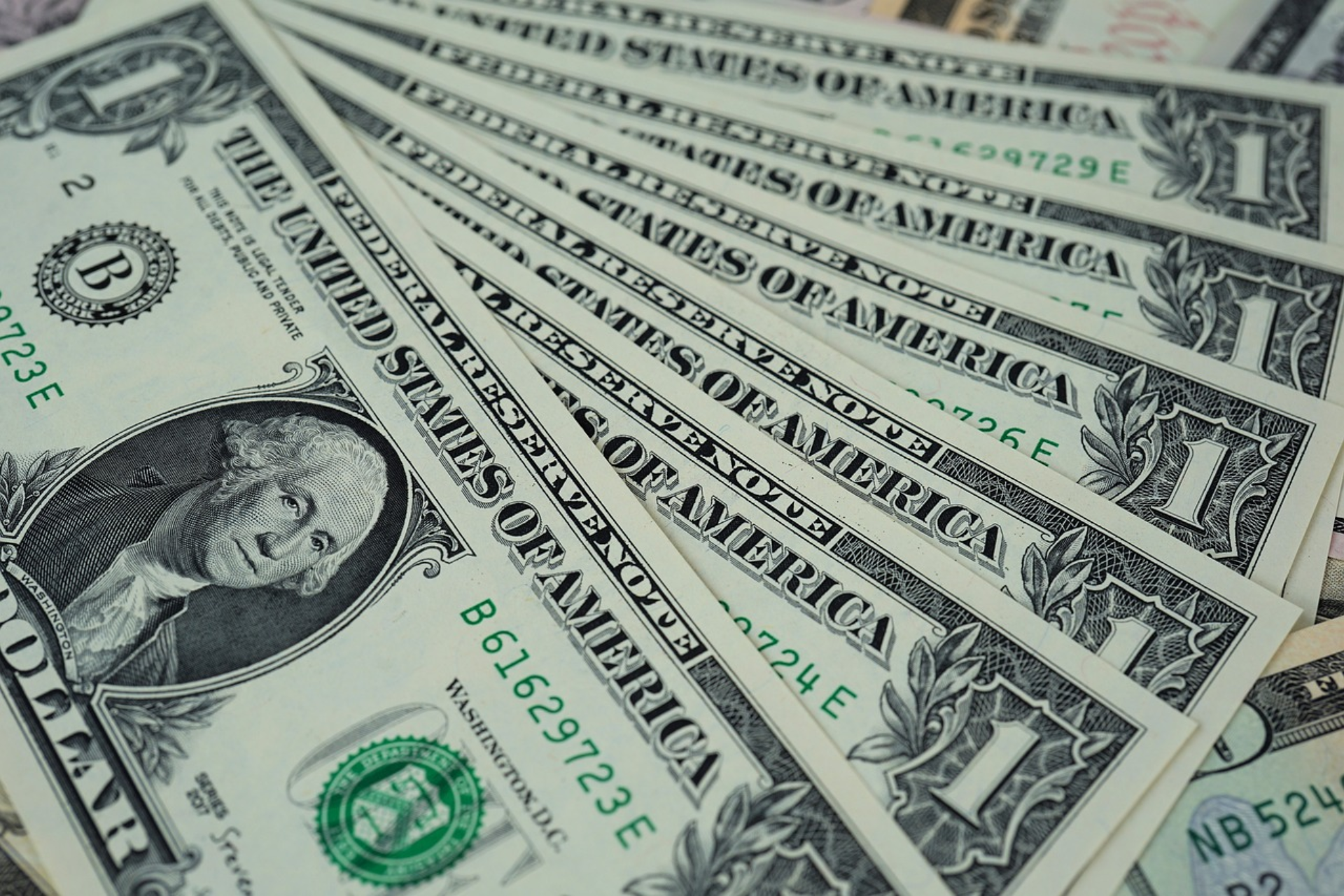
SA rand weakened 1% against US dollar after PPI
Reuters: The South African rand weakened around 1% against a stronger dollar on Thursday after the release of the central bank’s quarterly bulletin and producer price index data. SOUTH AFRICAN RAND WEAKENED At 1447 GMT, the rand traded at 18.8350 against the dollar, 0.92% weaker than its previous close. The dollar last traded at 103.17, […]

Reuters: The South African rand weakened around 1% against a stronger dollar on Thursday after the release of the central bank’s quarterly bulletin and producer price index data.
SOUTH AFRICAN RAND WEAKENED
At 1447 GMT, the rand traded at 18.8350 against the dollar, 0.92% weaker than its previous close. The dollar last traded at 103.17, more than 0.2% stronger, against a basket of global currencies. The U.S. currency has been supported since Wednesday when Federal Reserve Chairman Jerome Powell did not rule out more rate hikes.
ALSO READ: Fuel price LATEST: Petrol drop, diesel hike coming next week
South Africa’s producer inflation, slowed to 7.3% year on year in May from 8.6% in April, data showed on Thursday. “Both final and intermediate producer price inflation has cooled off rapidly in recent months, and the trend is set to continue,” said ETM Analytics in a research note. Other data showed South Africa recorded a small foreign direct investment inflow of 0.5 billion rand ($26.52 million) in the first quarter of 2023, down from a revised inflow of 64.0 billion rand in the previous quarter.
South Africa’s benchmark 2030 government bond was weaker, with the yield up 4 basis points at 10.520%.
ALSO READ: When will you receive your July SASSA grant?
U.S. DOLLAR
Reuters: The U.S. dollar held near a two-week top and was on track to reverse two quarters of losses against six major peers, drawing support from bets that the U.S. Federal Reserve has further to go in raising interest rates to tame inflation. The dollar index steadied at around 103.26 and was heading for a gain of over 0.6% for the second quarter. The number of Americans filing new claims for unemployment benefits unexpectedly fell last week, data on Thursday showed, while the Commerce Department the same day raised its estimate of first-quarter gross domestic product. “The two economic data releases came in above market expectations and certainly reinforced the narrative of a resilient U.S. economy,” said currency strategist Carol Kong at Commonwealth Bank of Australia.
ALSO READ: WATCH: SAA sets date for restart of intercontinental flights [VIDEO]
Sterling gained 0.16% to $1.26315 and was headed for a monthly gain of over 1.5%, as traders similarly price in more rate hikes from the Bank of England as Britain’s inflation rate continues to run high. The euro edged 0.09% higher to $1.0872 and was set to gain roughly 1.7% for the month against the backdrop of a still-hawkish European Central Bank. Further clarity on the bloc’s inflation outlook will come later on Friday, with June’s flash inflation data due to be released. “Even though there is still some tightening in the pipeline there will be an increasing emphasis on the time dimension of monetary policy,” said Elwin de Groot, head of macro strategy at Rabobank. “The bottom line is that in the U.S., the euro zone and the UK, policy hasn’t been restrictive enough for long enough to see a real impact on core inflation.”
BRITISH POUND
Reuters: Sterling was struggling on Thursday to recover from a sharp tumble the day before, its biggest daily drop in seven weeks, as markets turned nervous about the impact of rate hikes on the British economy. The pound was broadly steady against the dollar at $1.2638 by 0928 GMT, and also flat against the euro, which was worth 86.35 pence. “It’s a relatively quiet day from a data perspective, so overall I would not be surprised to see sterling somewhat licking its wounds today ahead of its next battle,” said Stuart Cole, chief macro economist at Equiti Capital. The pound on Wednesday dropped 0.88% against the dollar, its biggest daily fall since mid May and also lost ground on the euro.
ALSO READ: Odendaalsrus: Armed robbery suspects sought for bombing ATM
Cole said that tumble was a result of suggestions from Bank of England Governor Andrew Bailey that interest rates could continue to rise, hurting the British economy, and difficulties at Britain’s largest water supplier, Thames Water, “stoking fears about wider difficulties in the corporate sector as firms struggle to cope with the rapid increase in borrowing costs.” “The final nail in the coffin was Federal Reserve chair Powell, who basically confirmed another U.S. interest rate rise in July and possibly at least one more after that.” Previously, expectations that the United States was at the end of its rate hiking cycle while the European Central Bank and Bank of England had more to do, had sent the dollar lower against the pound and euro in the first half of this year.
However, investors are now starting to worry that further rate hikes in Britain in a bid to curtail entrenched inflation are bad news for the economy and also the pound. Inflation remains stubbornly well above the Bank’s 2% target, and fears that price rises are becoming entrenched in the UK economy are leading traders to increase their bets on further rate increases from the central bank. They see a 65% chance of a 50-basis-point rate rise at the BoE’s next meeting on Aug. 3, and a 25% chance of a 25 bps rise , with bets that the BoE’s Bank Rate – currently at 5% – could go as high as 6% by the end of 2023. The BoE has already raised the rate 13 times since late 2021 from 0.1% to try to calm inflation.
ALSO READ: South Africa: Today’s latest news and headlines, Friday, 30 June 2023
GLOBAL MARKETS
Reuters: Asian stocks inched higher on Friday as weak factory activity data from China stoked expectations of fresh stimulus, even as strong U.S. economic data bolstered the view that the Federal Reserve will stay hawkish for longer. The yen remained fragile after hitting the psychologically important barrier of 145 per dollar , fuelling intervention worries as Japan’s Finance Minister Shunichi Suzuki issued a another warning against excessive weakening of the currency. Futures indicated European stocks were set for a higher open, with Eurostoxx 50 futures up 0.18%, German DAX futures up 0.24% and FTSE futures 0.28% higher. MSCI’s broadest index of Asia-Pacific shares outside Japan was 0.3% higher in choppy trading, on course to eke out a gain of just over 1% in the first half of the year. Investors’ focus on Friday will be on the U.S. Personal Consumption Expenditures index reading, the Fed’s favoured inflation gauge.
But before that euro zone June inflation data will likely provide cues to the broader picture in the region, after data on Thursday showed German inflation rose more than expected in June. Economists polled by Reuters expect euro zone inflation to fall to 5.6% in June from 6.1% in May. While German consumer prices, harmonised to compare with other European Union countries, rose by a higher-than-anticipated 6.8% on the year in June, inflation fell sharply in Spain and Italy. “There is a growing divergence in the path of inflation across the region, which is leading to some disagreement about the right path for policy,” said Rob Carnell, ING’s regional head of research, Asia-Pacific. “Though one suspects that the response will be, if in doubt, hike.”
ALSO READ: BMW produces plug-in hybrid car in South African plant
Data through the week has painted a picture of a resilient U.S. economy that has eased some of the worries of an impending recession but also stoked expectations that the Fed will stay on its hawkish path. The number of Americans filing new claims for unemployment benefits unexpectedly fell last week, pointing to continued labour market strength, while first quarter GDP was sharply revised upward. Federal Reserve Chair Jerome Powell signalled on Thursday that the U.S. central bank was likely to resume its monetary tightening campaign after a break earlier this month. The strong economic data sent Treasury yields higher, with the yield on 10-year Treasury notes touching a three-month high of 3.868% on Thursday. It was last at 3.839%.
Meanwhile, China’s factory activity declined for a third straight month in June and weakness in other sectors deepened, official surveys showed on Friday, adding pressure for authorities to do more to shore up growth as demand falters at home and abroad. China’s blue-chip CSI300 Index and the Shanghai Composite Index rose nearly 1%, while Hong Kong’s Hang Seng Index was up 0.24% on stimulus hopes. In the currency market, the yen remained in spotlight, briefly trading at 145.07 per dollar – a fresh seven month low and breaking through the 145 barrier that analysts have been watching out for possible intervention.
ALSO READ: US Supreme Court bans the use of race in university admissions
When the yen breached the 145 level last September, authorities intervened in markets to support the currency for the first time in 24 years. The yen was last at 144.67 per dollar. “The government is watching currency market moves with a great sense of urgency,” Shunichi Suzuki said. “We will respond appropriately if the moves become excessive.” Japanese authorities are under pressure to combat a continued yen fall driven by market expectations that the Bank of Japan will keep interest rates ultra-low, even as other central banks tighten monetary policy to curb inflation. U.S. crude was flat at $69.87 per barrel and Brent was at $74.49, up 0.2% on the day.
Published by the Mercury Team on 30 June 2023
